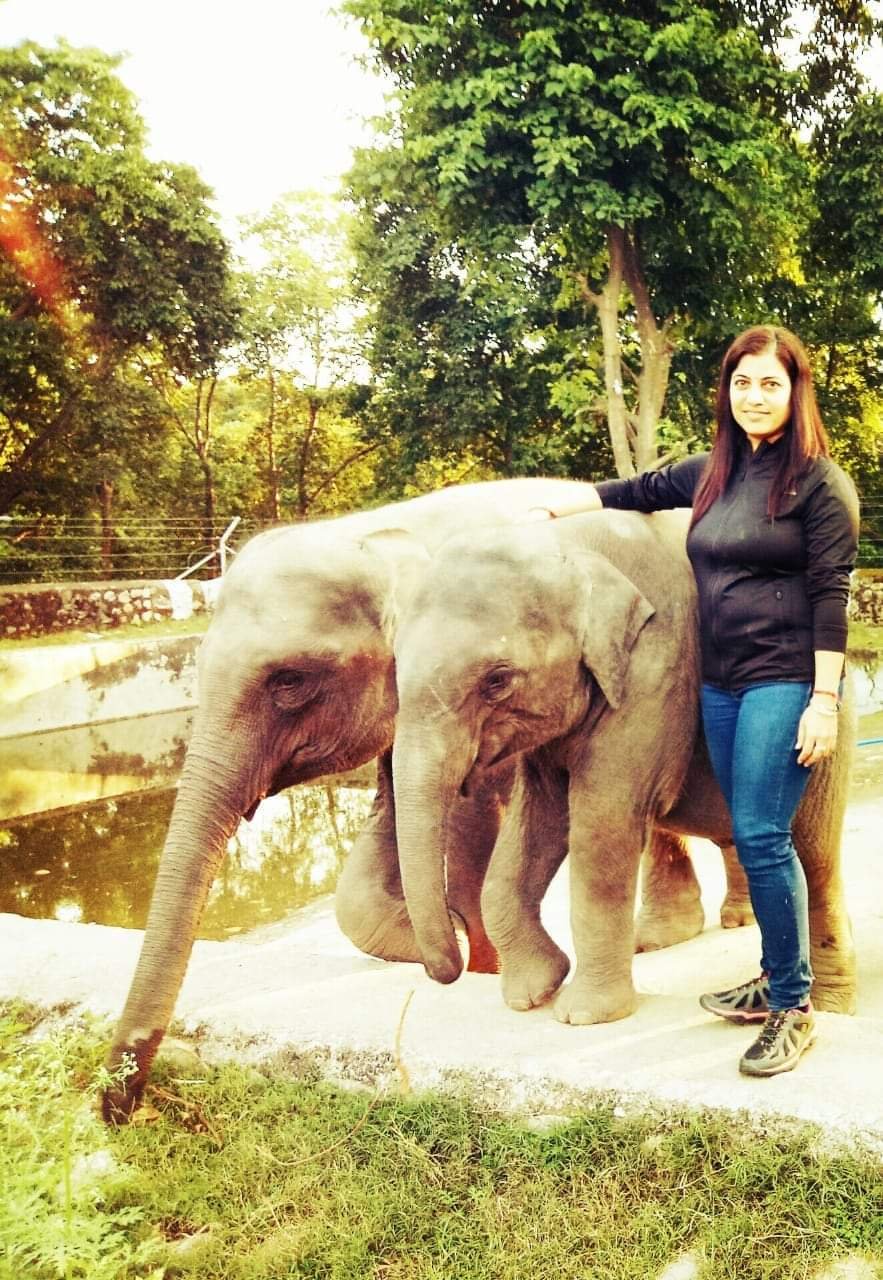Drivers of Human Leopard Conflict & its Mitigation in Uttarakhand
Dr. Aditi Sharma, Senior Veterinary Officer, Rajaji Tiger Reserve
Background:
History of Leopard predation on hominids:
In 1970, South African paleontologist C. K. Brain showed that a juvenile Paranthropus robustus individual, SK 54, had been killed by a leopard at Swartkrans in Gauteng, South Africa approximately 1.8 million years ago.The SK 54 cranium bears two holes in the back of the skull—holes that perfectly match the width and spacing of lower leopard canine teeth. The leopard appears to have dragged its kill into a tree to eat in seclusion, much like leopards do today. Numerous leopard fossils have been found at the site, suggesting that the felids were predators of early hominids. The revelation that these injuries were not the result of interpersonal aggression but were leopard-inflicted dealt a fatal blow to the then-popular killer ape theory. Another hominid fossil consisting of a 6-million-year-old Orrorin tugenensis femur (BAR 1003’00), recovered from the Tugen Hills in Kenya, preserves puncture damage tentatively identified as leopard bite marks.This fossil evidence, along with modern studies of primate–leopard interaction, has fueled speculation that leopard predation played a major role in primate evolution, particularly on cognitive development.
Panther attacks a man. Roman fresco in the Sala della Sfinge, Domus Aurea, Rome, 65-68 A.D.
History of Human Leopard Conflict in Uttarakhand:
CASES OF LEOPARD ATTACKS ON HUMAN IN UTTARAKHAND FROM 1998-2012
PAURI GARHWAL DIVISION 183
LANSDOWNE DISION 54
DEHRADUN DIVISION 18
UPPER YAMUNA BARKOT DIVISION 17
HARIDWAR DIVISION 11
RAJAJI NATIONAL PARK 3
NO. OF HUMAN DEATHS BYLEOPARD ATTACK & YEAR
NAME OF REGION YEAR NO.OF DEATHS
UTTARAKHAND 2000-2007 239
PAURI GARHWAL DIST. 1988-2000 140
GARHWAL DIVISION 1918-1926 125
Drivers of Human Leopard Conflict:
A. Primary Drivers of Human Leopard Conflict:
1. Explosion of Human Population & Increased Anthropogenic Pressure (Encroachment of forest area)
2. Narrow Human/Livestock- Wildlife Interface
3. Habitat Fragmentation due to Linear Developments
4. Lack of Policy for Surplus Population of Wild Animals
5. Change in Behaviour & Food Habits of Leopard
6. Sharing of Habitat & Resources by Livestock & Wild Animals
7. Blocked / Non-functional Wildlife Corridors
8. Decreased Tolerance Power of People
9. Communication Gap Between Forest Department & Community
10. Unmanaged Population of Stray Dogs
11. Improper Waste Disposal
B. Secondary Drivers of Human Leopard Conflict:
1. CHANGED BEHAVIOUR of LEOPARD/ELEPHANT: MORE CHANCES OF UNUSUAL ACCIDENTAL ENCOUNTERS
2. CHANGED MOVEMENT TIME: DIFFICULTY IN AVOIDING ENCOUNTERS BY TAKING PRECAUTIONS
3. LOW ECONOMIC STATUS OF PEOPLE: READY TO RISK THEIR LIVES
4. DEPENDENCY OF PEOPLE ON FOREST: LOW WILLINGNESS TO ACCEPT THE THREAT OF LEOPARD ENCOUNTERS
Plan of Action for Human Leopard Conflict Mitigation:
1. Baseline Information expected through appraisal & hazard, exposure & context assesment
1. Number of cases of leopard attacks & kills of humans & livestock.
2. List of villages within 1km of forest divisions & PAs and identification of vulnerable ones from them.
3. Drivers of human leopard conflict in different areas of Uttarakhand.
4. List of Hot Spots of conflict & Risk Map.
5. No. and Names of existing EDC/SHG/Task Force formed under any kind of scheme.
6. Information about names of Agencies / NGOs working in that area to be used for future collaboration for community work.
7. Estimate of Human population & Livestock population in the vulnerable villages along with gender details according to latest Government Population Census.
8. Information about STEEP i.e. socio-cultural, technical and scientific, economic, environmental, ethical, and policy and political values of the communities residing in the bordering villages.
9. It would be an extra advantage if we could know the population estimate & carrying capacity of the leopards in various Forest Divisions & PAs.
2.Human Leopard Conflict Event Detection & Risk Assessment Process
Risk assessment is a systematic process for gathering, assessing and documenting information to assign a level of risk. It provides the basis for taking action to manage and reduce the negative consequences of acute health risks . The risk management cycle includes:
1. Risk assessment — hazard, exposure and context assessment and risk characterization in which the level of risk is assigned to the event.
2. Identification of potential control measures — ranked by priority, taking into account likelihood of success, feasibility of implementation and unintended consequences for the affected population and society more broadly
3. Continuous monitoring and evaluation as the event unfolds
4. Effective ongoing risk communication to ensure that risk managers, other stakeholders and affected communities understand and support the control measures that are implemented
5. An evaluation of lessons learned at the end of the mitigation operation.
Type of Conflict:
1. HUMAN INJURY/DEATH
2. LIVESTOCK INJURY/DEATH
3. CROP RAIDING/DAMAGE
4. PSYCHOLOGICAL STRESS/FEAR
Nature of Conflict:
1. Accidental Encounter
2. Intentional Attack
Human Leopard Conflict Mitigation Measures
1. Situation Analysis
2. Assess The Type & Magnitude Of Conflict & Plan To Adress Accordingly Seeking Due Permissions From Concerned Authorities
3. Identification Of Hot Spots Of Conflict
4. Estimation Of Conflict Animal Species Population Around Conflict Site
5. Predation/ Risk Mapping
6. Assessment Of Preparedness And Resources Availability To Manage The Conflict.
7. Evaluation Of The Capacity And Skills Of The Officers And Staff To Manage The Conflict.
8. Identify The Conflict Causing Wild Animal
9. Track, Monitor & Plan Capture If Required
10. Health Evaluation Of The Captured Animal & Decide To Release/ Rehabilitate
11. Accordingly If Release Is Planned Then First Radio Collar The Animal For Post Release Monitoring
RECENT TRENDS OF HUMAN WILDLIFE CONFLICT MITIGATION
1. Looking At It As Human Wildlife Interaction Not Conflict To Address It Positively.
2. Creating Baseline Data Of Conflict And Hot Spot Mapping
3. Formation Of Dedicated RRT/PRT/VPF For Conflict Mitigation
4. Capacity Building Of The Forest Officers & Staff
5. Public Awareness Campaigns & Promoting Public Participation In Conflict Mitigation
6. Use Of Advanced Techniques & Equipments For Tracking, Monitoring , Immobilisation, Health Screening, Recording & Documenting The Operation
7. Use Of Camera Traps, GPS, Compass, Range Finders,Binoculars etc. for tracking & monitoring of the target animal.
8. Use of advanced rescue equipments like Catch Pole, full body protector, Jabstick, Dan Inject tranquillising gun, blow pipe, net gun, trapping net etc.
9. Public Awareness Campaigns
10. Capture, Radiocollaring and monitoring of Leopards, Tigers & Elephants
11. Physical & Chemical Trapping Methods
12. Advanced Warning System
13. Use of different barriers like solar fencing, trenches etc.
GUIDELINES FOR HUMAN-LEOPARD CONFLICT MANAGEMENT
guidelines-human-leopard-conflict-management




